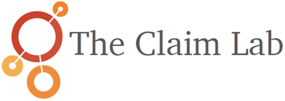July 2024 – The Psychosocial Drumbeat
Ok let’s set a bar here…
Serious medical conditions or injuries, whether at work or elsewhere, will result in disability or workers compensation claims, and our job in the insurance business is to support the individual in their time of need.
Yet in every claim there is more than just a medical condition.
Let’s look at an example, if I sprain my back lifting bags of cement for my patio project at home over the weekend….
On Monday morning I will make a decision, do I go into work or not.
How much of this is driven by my back pain, and how much is driven by my personal drive, my love of my job, not letting my team down….
If my boss’s parting comment on Friday night was “And you better have those numbers ready by Monday morning or you’re in big trouble!”
How will that affect my decision whether to go to work or not?
Or maybe there are things going on in my personal life that will ’complicate’ my decision.
Any one of these factors could affect my level of tolerance of my back pain.
Every claim has this psychosocial element.
It’s not even a conscious decision…. It’s just a feeling, background noise, it’s just there!
If only we had a meter to measure the level of psychosocial influence on a claim, in a repeatable, consistent way.

Yet typically in a claims department we rush around, saying “Oh I have a musculoskeletal, or a respiratory claim… or a head injury”…. We manage claims medically…
We know from the data that the psychosocial state is a vitally important part of the picture. People have been banging away about the Biopsychosocial model for years…
But the problem is that claim managers are all so busy there’s no time to talk to the claimant to understand the wider issues… “Either they will RTW or not…. If they don’t, we will worry about it then…!”
However, we know that people who are stuck at home, looking at the wall all day, eventually start to talk to the wall…. Or worse they watch day-time television and see all those adverts for injury law firms….
So, the longer you leave a claim, the harder it is to resolve the claim.
“Yes, but we are too busy!” I hear you say….
Ok let’s see if we can find something that will help….
It’s called DATA…..
We have been involved with claims data, studying influencers on claim duration, for a long time.
This is a picture of me when I started at the age of 18…. Very motivated and keen to get on, but introverted, and prone to anxiety!

In claims management, surely it would help if we had a complete picture of the individual… Not just the medical diagnosis, but an insight into the person behind the claim and where they sit on our imaginary psychosocial meter. This will help us understand the best way to help get that person back to work, before they start talking to the wall….
We can do this by asking questions about what’s going on in their lives.
What their feelings are, how they are dealing with their condition or injury…
– How work is going….
– What does home life look like….
– How they are coping with pain…
– Their level of emotional distress…
Where do we get this information from?
Well, we would advocate the use of a Questionnaire to gather this information.
You could do it via a telephone interview, but that is time consuming, and the notes taken by the case managers are variable … to say the least.
One advantage of the Questionnaire is that the data is highly structured as its categorical, so it’s great for feeding into models to assess risk.
From this we can paint a picture of the individual…. And then we apply a scale on which we can comparatively measure these factors.
So, we know where on our imaginary psychosocial meter an individual sits. From this we can assess whether the psychosocial level is likely to impact the return-to-work process, we can quantify the psychosocial risk factor.
We advocate a Questionnaire being applied at the very start of the claim process so we can assess this risk at the very outset. This enables claim mangers to apply a return-to-work plan which takes into account the psychosocial risk factors.
Such a return-to-work plan reflects the wider needs of the individual not just the medical condition.
By gaining this full assessment on a repeatable scale, we can understand the claims that need a high-touch process and those that need a low-touch process. We can segment the claims using psychosocial risk factors, spending more time on high risk claims and less time on low risk claims.
I’m sure its no surprise to hear that we see very strong correlations in our data between these risk factors and claim duration.
So the people who have been “banging-on” about wholistic claims management and the biopsychosocial model were right all along…. We always knew it, now we can prove it, and now we can measure it.
If you want to discuss what this in more detail, please contact me at ibridgman@claimlab.org.
